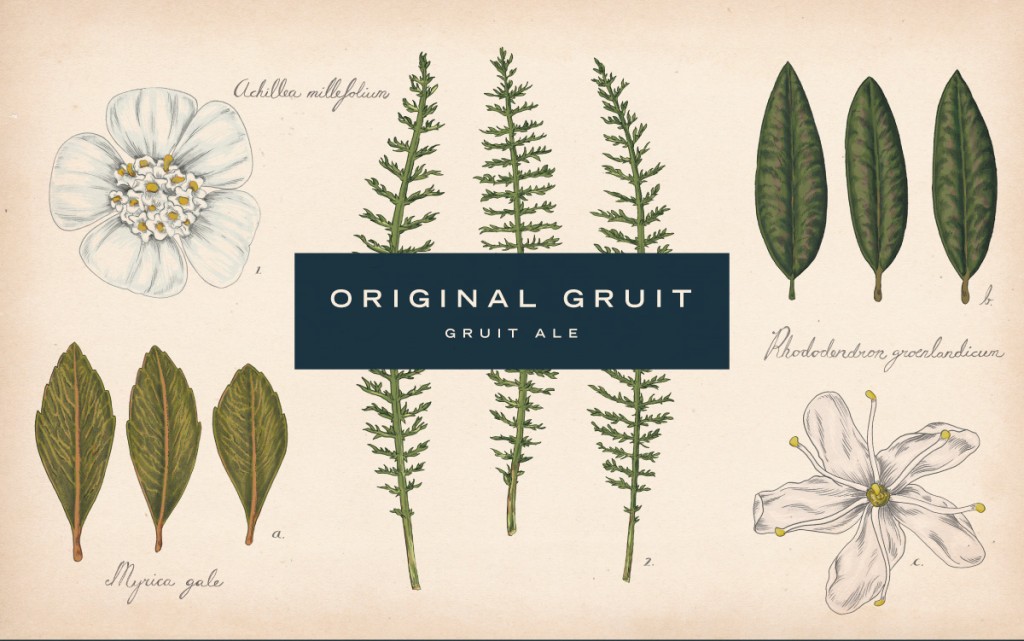Today, beer generally contains four ingredients: water, hops, barley, and yeast. But before hops hit the scene in the fifteenth and sixteenth centuries, most brewers flavored their beers with a mixture of herbs and other plant material: sweet gale, yarrow, mugwort, juniper twigs, goldenrod, Queen Anne’s lace, sassafras, or whatever else was on hand. This precursor to modern beer, seasoned with herbs and spices, was known as gruit.
Why the switch to hops? The state and church viewed these herbs as seductive aphrodisiacs, with their usage bordering on witchcraft. Hops were thought to be more sedative and repressive, and thus a much safer ingredient for mass consumption. With the passing of the Bavarian Purity Law of 1516 (Reinheitsgebot), hops became the primary bittering agent in beer and gruit ales fell by the wayside.
These days, however, gruit ales are experiencing a rebirth. Jake Kristophel, farmer at Fallen Aspen Farm and brewer at Full Pint Brewery in North Versailles, Pennsylvania, is one of a few beer nerds responsible for the unlikely resurrection.
“I’ve always liked brewing with herbs,” Jake says. Using both cultivated and foraged ingredients from his farm, he’s brewed a seasonal gruit ale for the past two years.
“People are really digging it because they never tasted anything like it,” he says.
Unlike the hop-forward IPAs that have become popular lately, gruit ales offer subtle nuanced flavors that aren’t as familiar to the average beer drinker’s palate. Full Pint’s gruit, for instance, has a strong bitter flavor (mostly due to the wormwood, Jake says) that is balanced with sour notes from saison yeast and the root beer-like flavor of sassafras.
Each year, February 1st marks International Gruit Day, during which brewers around the world will brew gruit ales using ingredients specific to their region. Cambridge Brewing Company’s Heather Ale is flavored with handpicked heather flowers, sweet gale, and lavender; Brewery Becker in Brighton, Michigan, makes a Scandinavian farmhouse ale called Vargdricka that is bittered with juniper berries and boughs, straw, smoke, and Bog Myrtle.
Legally, a “malt beverage” must include hops to be considered as such, so most modern gruit ales contain some amount of small hops. However, they primarily rely on other traditional herbs and plant matter for the bulk of their flavoring. Wild herbs provide an opportunity for brewers to source local ingredients that are available on a seasonal basis.
Though still relatively unknown in the brewing world, gruit ales are gaining popularity thanks to celebrations like International Gruit Day. But don’t expect them to become the next big thing. The herbs and plants used to make gruit are not typically sold by brewer’s supply companies, which means that brewers are subject to the limited seasonal availability of ingredients in their area.



